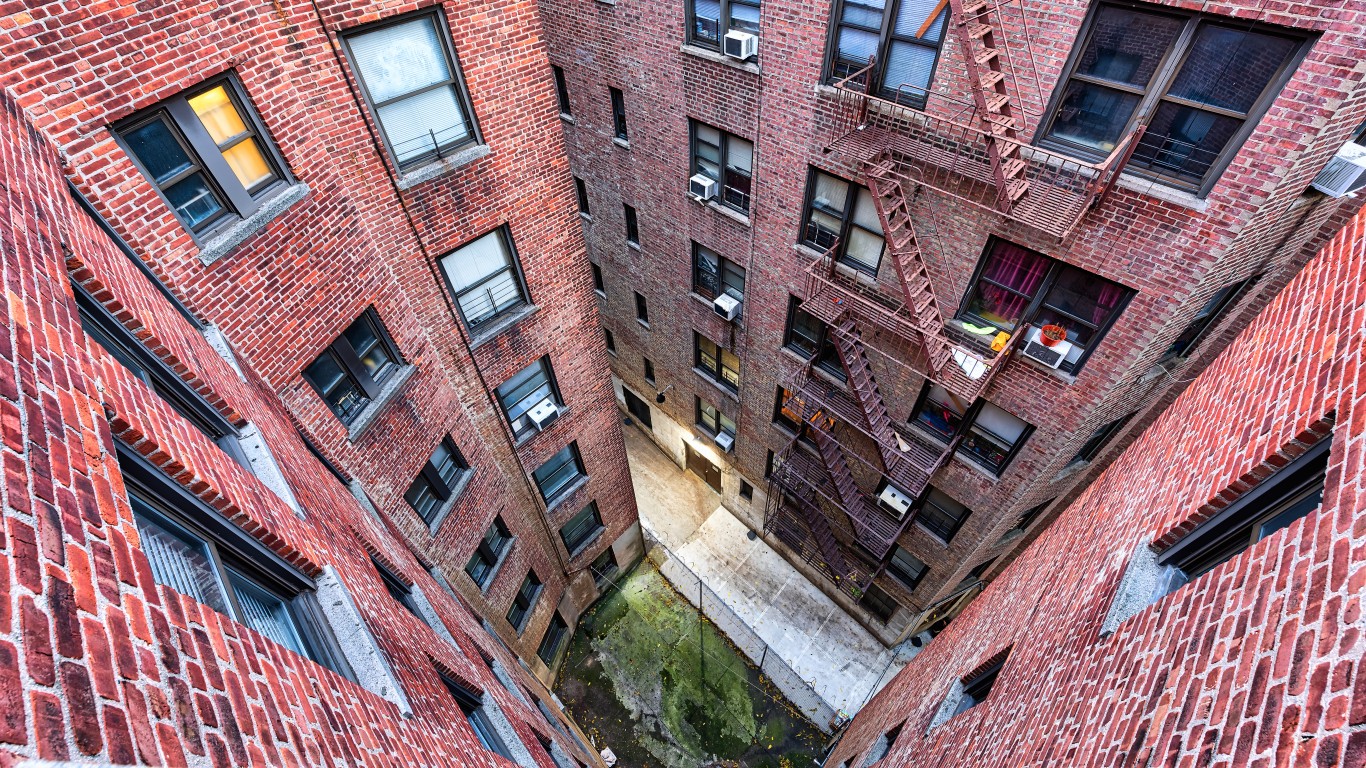
Nearly 5% of U.S. homes are either moderately inadequate or severely inadequate for living, according to the Census Bureau and the Department of Housing and Urban Development’s American Housing Survey. All told, that amounts to approximately 6 million moderately or severely inadequate homes sheltering an estimated 15.5 million people (assuming 2.6 people per household, the most recent Census estimate). (See if any of the cities on the list are also among the cities with the strongest economies in 2022.)
Among the nation’s largest cities, the share of housing units deemed by HUD to be inadequate ranges from 2.3% to 6.5%, in each case representing thousands of houses and apartments.
To determine the cities with the most homes people shouldn’t live in, 24/7 Wall St. reviewed the 2019 American Housing Survey, which includes estimates on the percentage of moderately or severely inadequate housing units in 22 metropolitan areas. These metropolitan areas represent approximately 121 million people, or 37% of the U.S. population. All but one of the 15 largest metropolitan areas in the country — Miami — are represented on the list.
HUD defines housing units as moderately or severely inadequate if they meet a variety of conditions, including the lack of hot water, lack of electricity, lack of proper heating due to malfunctioning heating equipment, and a variety of maintenance issues such as cracks, broken windows, leaks, and signs of rat infestations. Though cockroach infestation and mold are not included in the HUD criteria for inadequate living conditions, we included the information in our report.
Even in metropolitan areas with fewer inadequate homes, a high percentage of homes have conditions that may not be defined as unlivable according to HUD’s definitions, but are still far from desirable. For example, in the Denver metropolitan area, which has the smallest share of inadequate units among the 22 cities on this list, 4.6% of housing units, or more than 50,000 housing units, had reported stoppage of hot and cold piped water in the three months prior to the survey being conducted.
In Detroit, where a relatively low 3.3% of housing units were considered moderately or severely inadequate, close to 1 in 10 homes had reported at least 24 hours of being uncomfortably cold the previous winter due to broken heating equipment. (Looking to move? Consider these best cities to move to.)
Click here to see the cities with the most homes people shouldn’t live in.
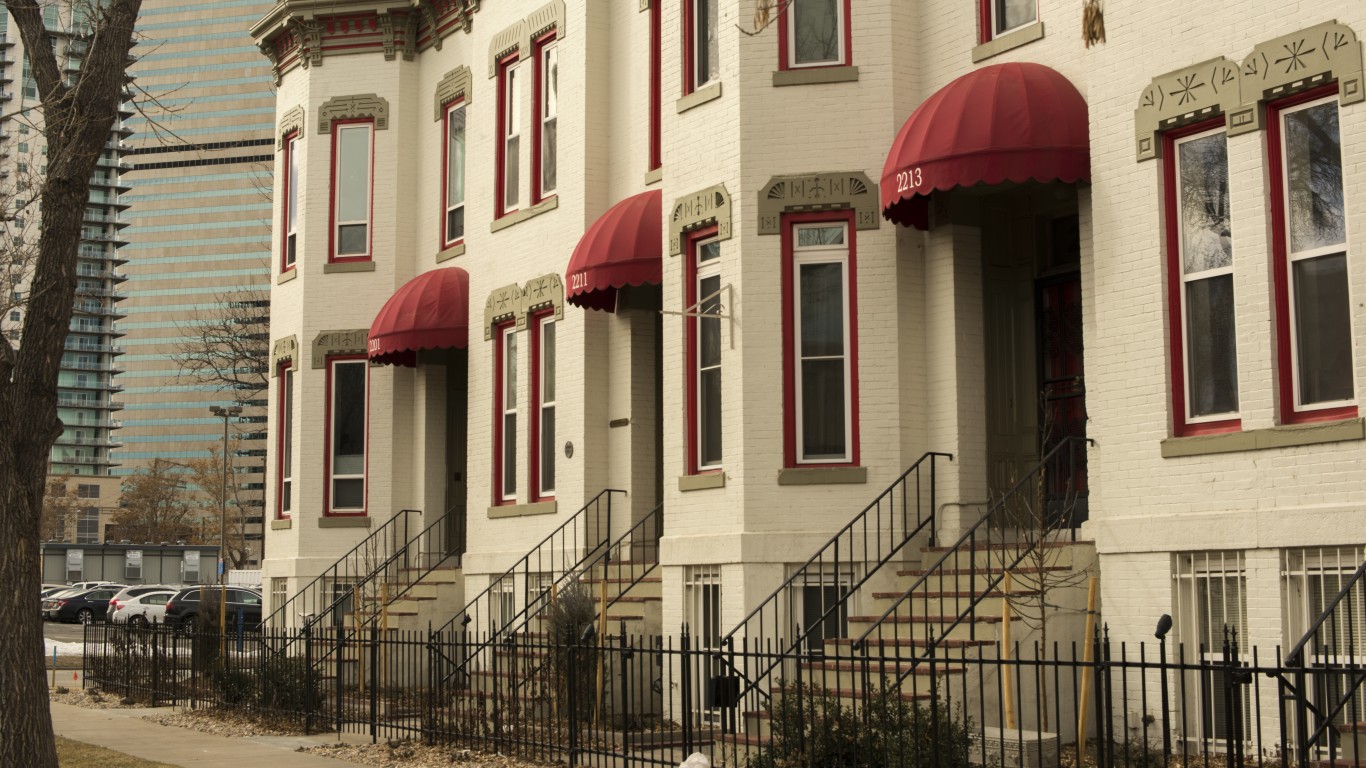
22. Denver-Aurora-Lakewood, CO
> Housing units moderately or severely inadequate: 2.3% (14,800 housing units)
> Housing units with piped water interruption: 4.6%
> Housing units with broken windows: 3.0%
> Housing units uncomfortably cold 24 hours or more: 7.6%
> Housing units with infestations: rats: 10.8% cockroaches: 2.4% mold: 1.7%
[in-text-ad]
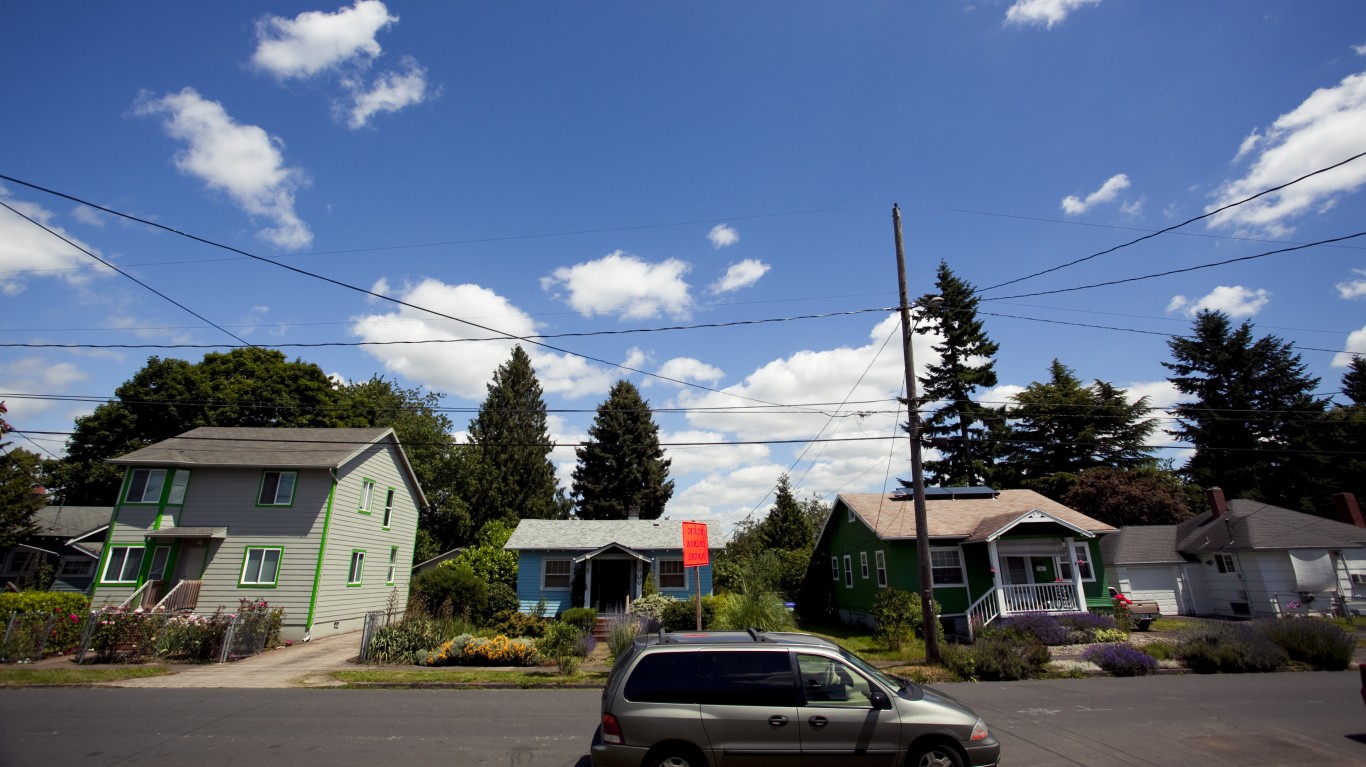
21. Portland-Vancouver-Hillsboro, OR-WA
> Housing units moderately or severely inadequate: 2.8% (19,400 housing units)
> Housing units with piped water interruption: 2.8%
> Housing units with broken windows: 2.0%
> Housing units uncomfortably cold 24 hours or more: 6.3%
> Housing units with infestations: rats: 9.1% cockroaches: 0.9% mold: 3.8%
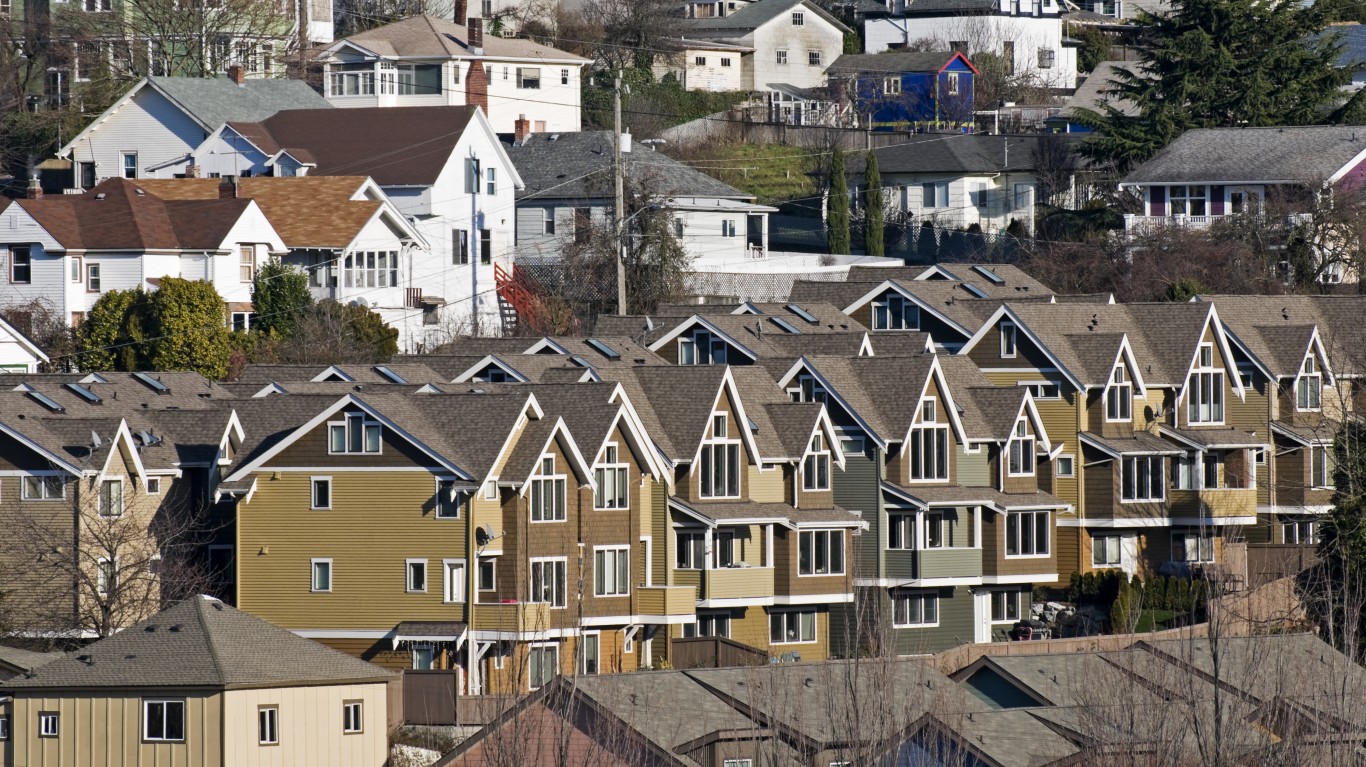
20. Seattle-Tacoma-Bellevue, WA MSA
> Housing units moderately or severely inadequate: 2.8% (29,000 housing units)
> Housing units with piped water interruption: 2.5%
> Housing units with broken windows: 1.7%
> Housing units uncomfortably cold 24 hours or more: 6.0%
> Housing units with infestations: rats: 4.8% cockroaches: 0.7% mold: 2.8%

19. Riverside-San Bernardino-Ontario, CA
> Housing units moderately or severely inadequate: 3.0% (26,100 housing units)
> Housing units with piped water interruption: 1.7%
> Housing units with broken windows: 2.6%
> Housing units uncomfortably cold 24 hours or more: 5.0%
> Housing units with infestations: rats: 6.3% cockroaches: 8.3% mold: 1.9%
[in-text-ad-2]

18. Phoenix-Mesa-Scottsdale, AZ
> Housing units moderately or severely inadequate: 3.1% (43,400 housing units)
> Housing units with piped water interruption: 3.4%
> Housing units with broken windows: 3.0%
> Housing units uncomfortably cold 24 hours or more: 2.4%
> Housing units with infestations: rats: 3.1% cockroaches: 15.5% mold: 1.7%
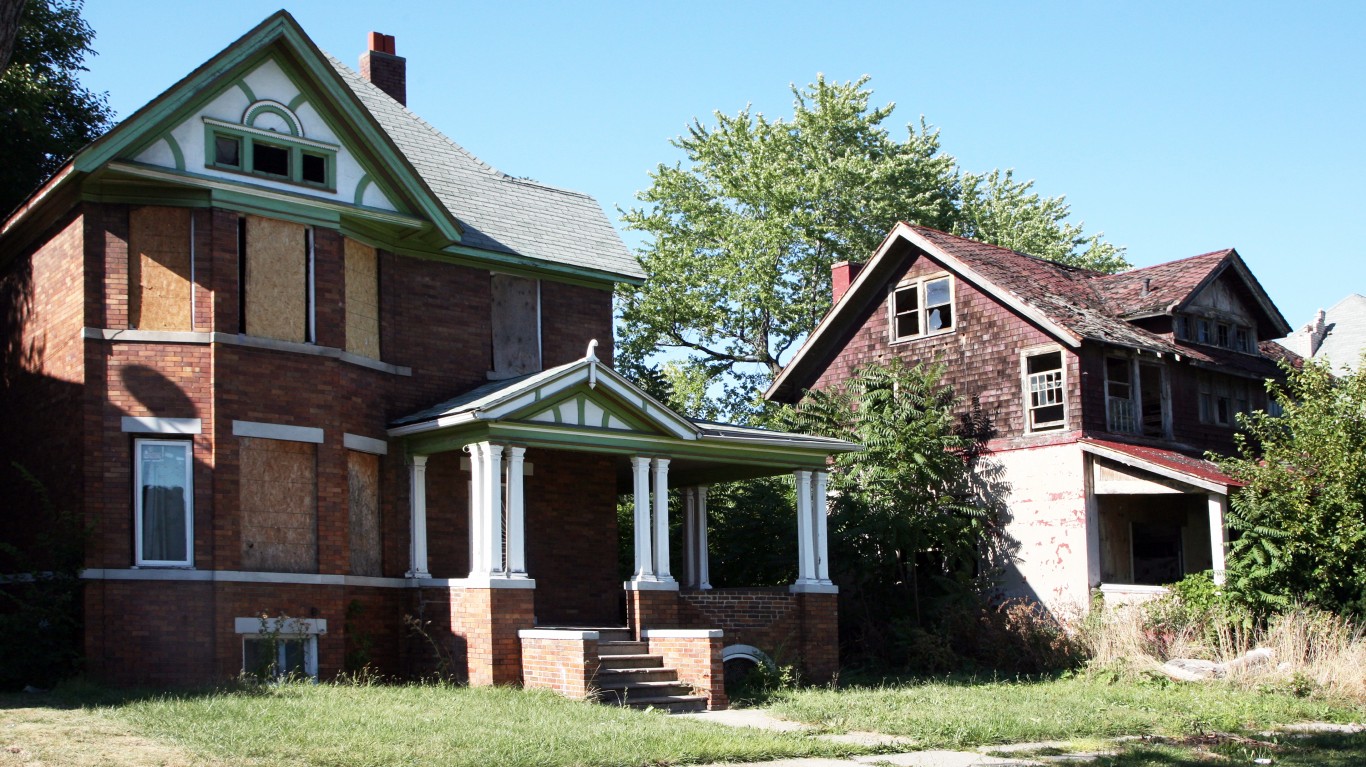
17. Detroit-Warren-Dearborn, MI
> Housing units moderately or severely inadequate: 3.3% (39,700 housing units)
> Housing units with piped water interruption: 2.2%
> Housing units with broken windows: 2.2%
> Housing units uncomfortably cold 24 hours or more: 9.4%
> Housing units with infestations: rats: 6.5% cockroaches: 1.3% mold: 2.4%
[in-text-ad]
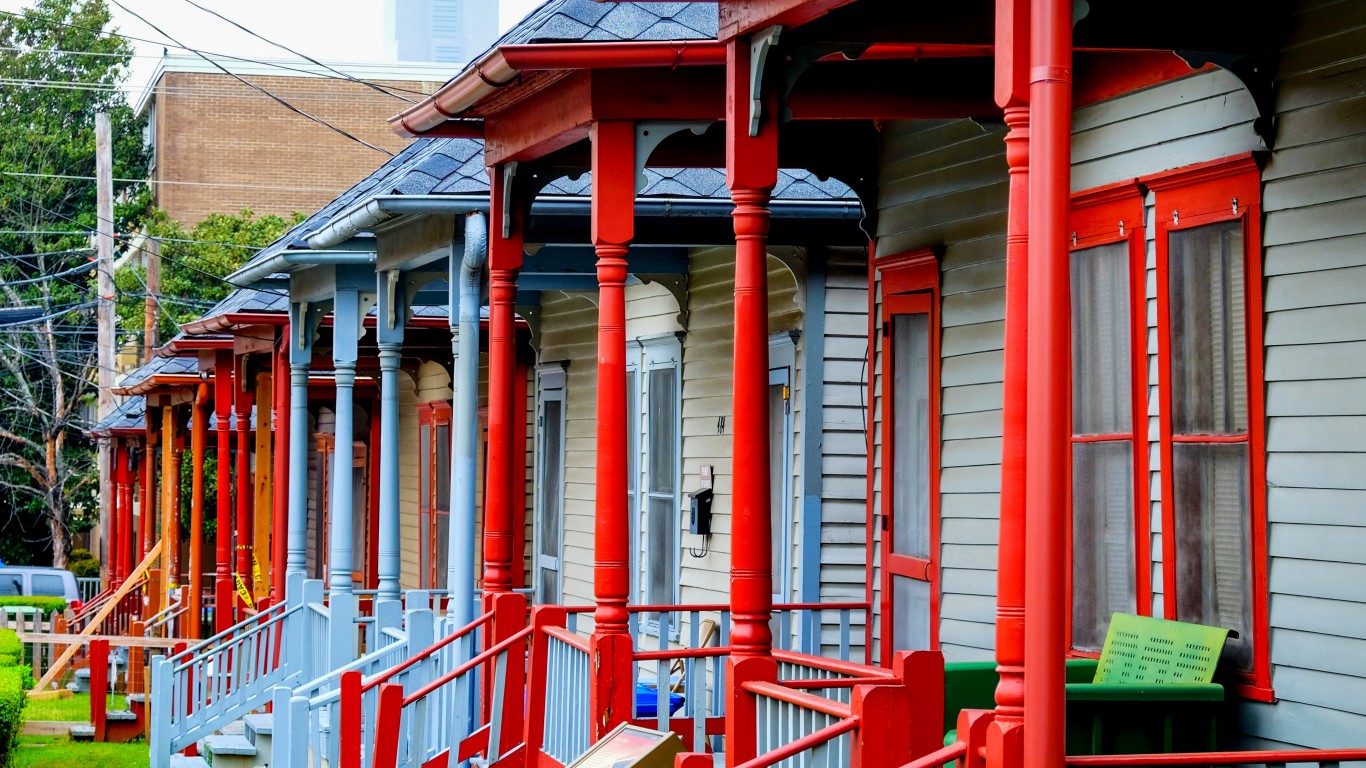
16. Atlanta-Sandy Springs-Roswell, GA
> Housing units moderately or severely inadequate: 3.6% (56,800 housing units)
> Housing units with piped water interruption: 2.7%
> Housing units with broken windows: 2.1%
> Housing units uncomfortably cold 24 hours or more: 3.9%
> Housing units with infestations: rats: 5.0% cockroaches: 29.4% mold: 3.1%
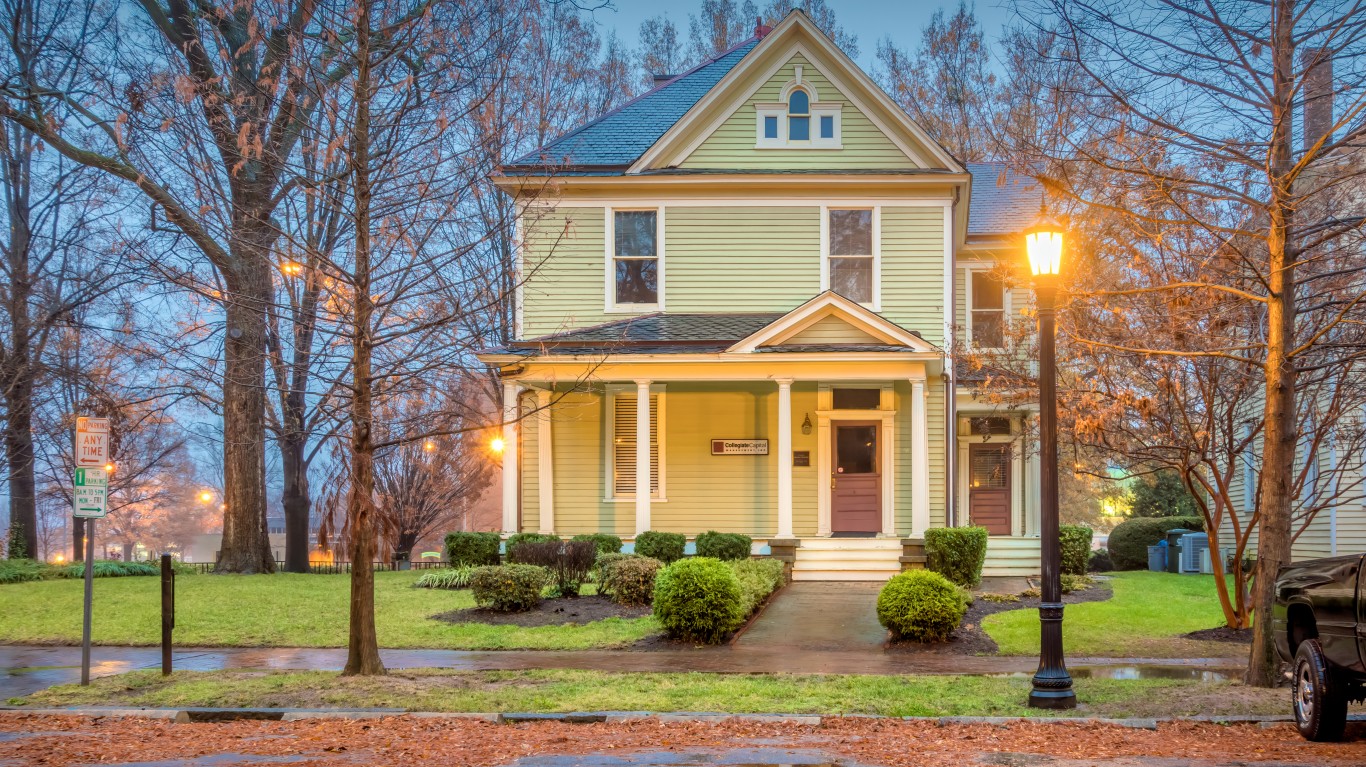
15. Raleigh, NC
> Housing units moderately or severely inadequate: 3.8% (14,600 housing units)
> Housing units with piped water interruption: 2.4%
> Housing units with broken windows: 2.1%
> Housing units uncomfortably cold 24 hours or more: 6.1%
> Housing units with infestations: rats: 8.9% cockroaches: 24.1% mold: 2.7%
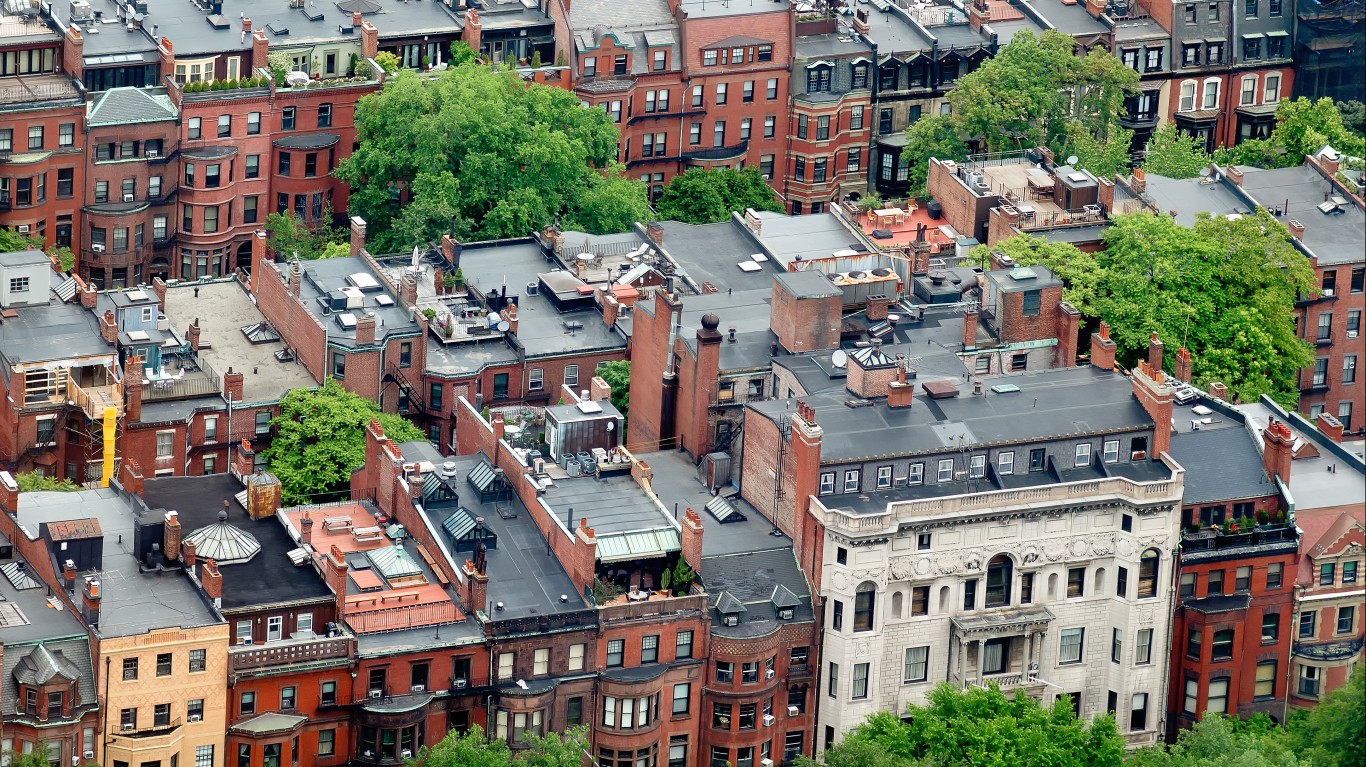
14. Boston-Cambridge-Newton, MA-NH
> Housing units moderately or severely inadequate: 3.9% (54,800 housing units)
> Housing units with piped water interruption: 1.8%
> Housing units with broken windows: 1.8%
> Housing units uncomfortably cold 24 hours or more: 7.7%
> Housing units with infestations: rats: 18.4% cockroaches: 2.9% mold: 2.3%
[in-text-ad-2]
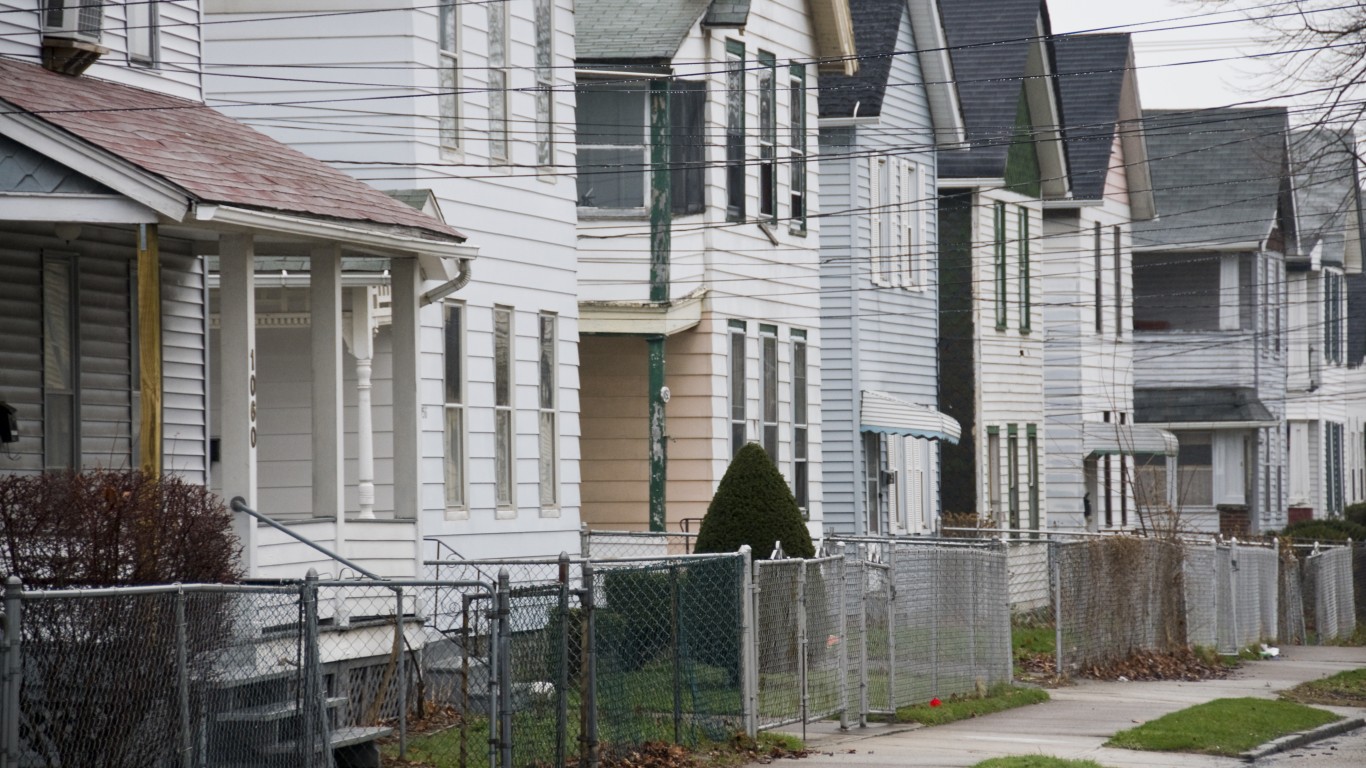
13. Cleveland-Elyria, OH
> Housing units moderately or severely inadequate: 4.1% (25,500 housing units)
> Housing units with piped water interruption: 1.5%
> Housing units with broken windows: 2.8%
> Housing units uncomfortably cold 24 hours or more: 6.5%
> Housing units with infestations: rats: 12.2% cockroaches: 3.1% mold: 2.9%
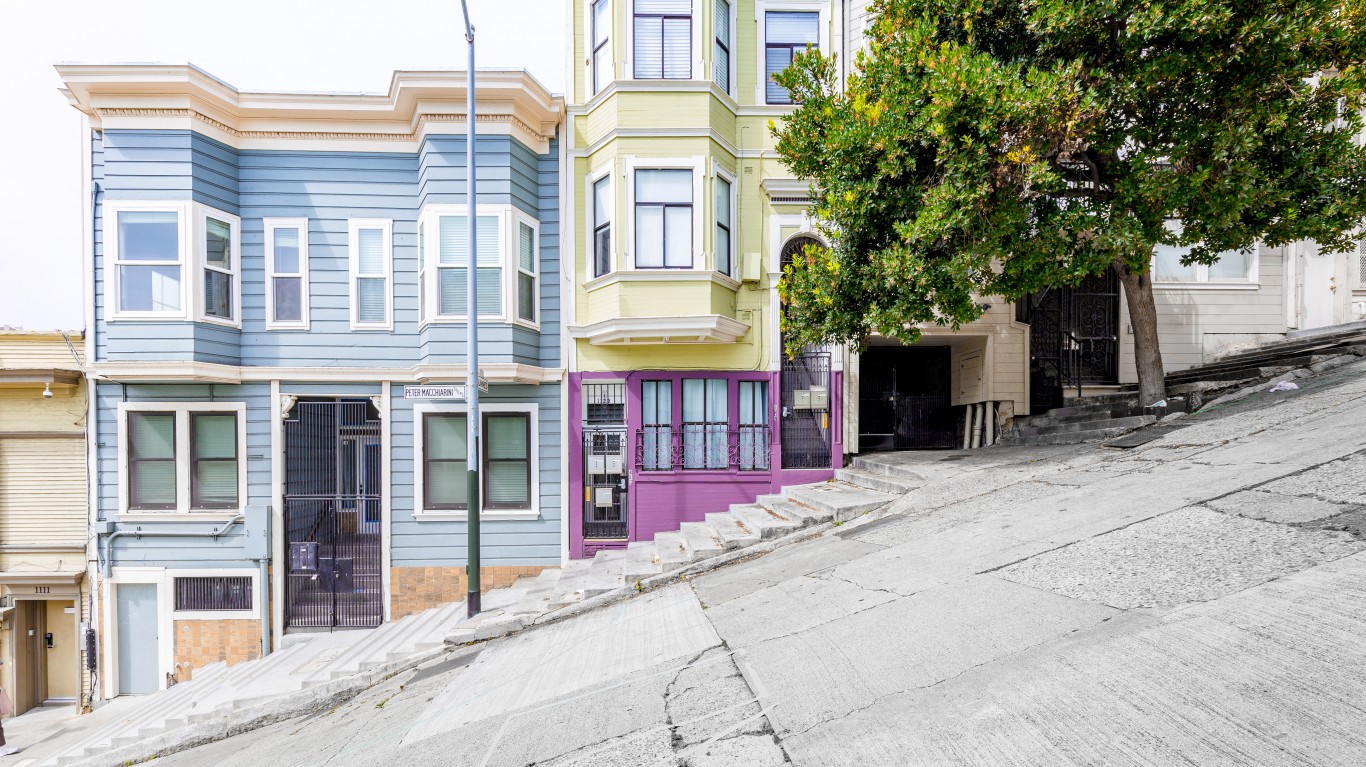
12. San Francisco-Oakland-Hayward, CA
> Housing units moderately or severely inadequate: 4.2% (48,600 housing units)
> Housing units with piped water interruption: 2.4%
> Housing units with broken windows: 0.8%
> Housing units uncomfortably cold 24 hours or more: 5.7%
> Housing units with infestations: rats: 7.4% cockroaches: 3.8% mold: 3.0%
[in-text-ad]
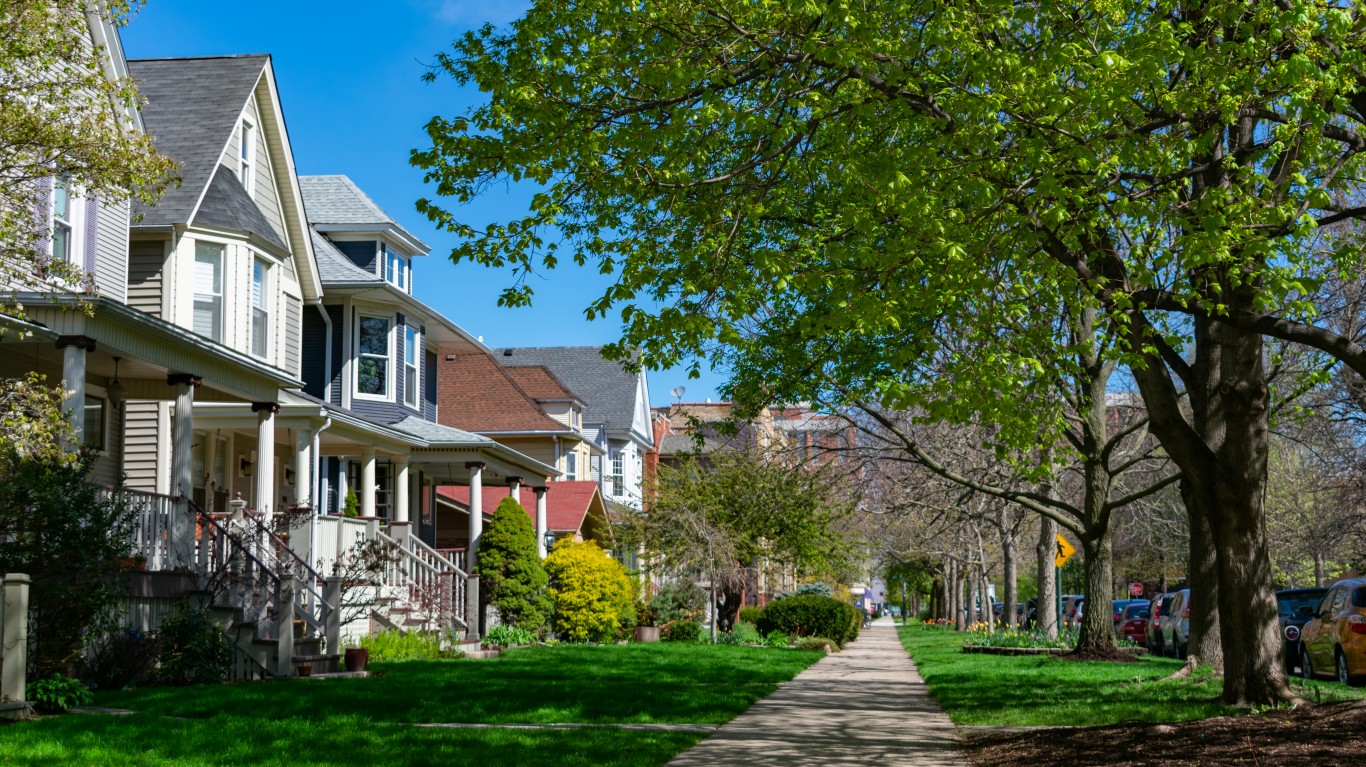
11. Chicago-Naperville-Elgin, IL-IN-WI
> Housing units moderately or severely inadequate: 4.3% (118,200 housing units)
> Housing units with piped water interruption: 2.5%
> Housing units with broken windows: 1.9%
> Housing units uncomfortably cold 24 hours or more: 7.8%
> Housing units with infestations: rats: 13.3% cockroaches: 4.5% mold: 3.1%
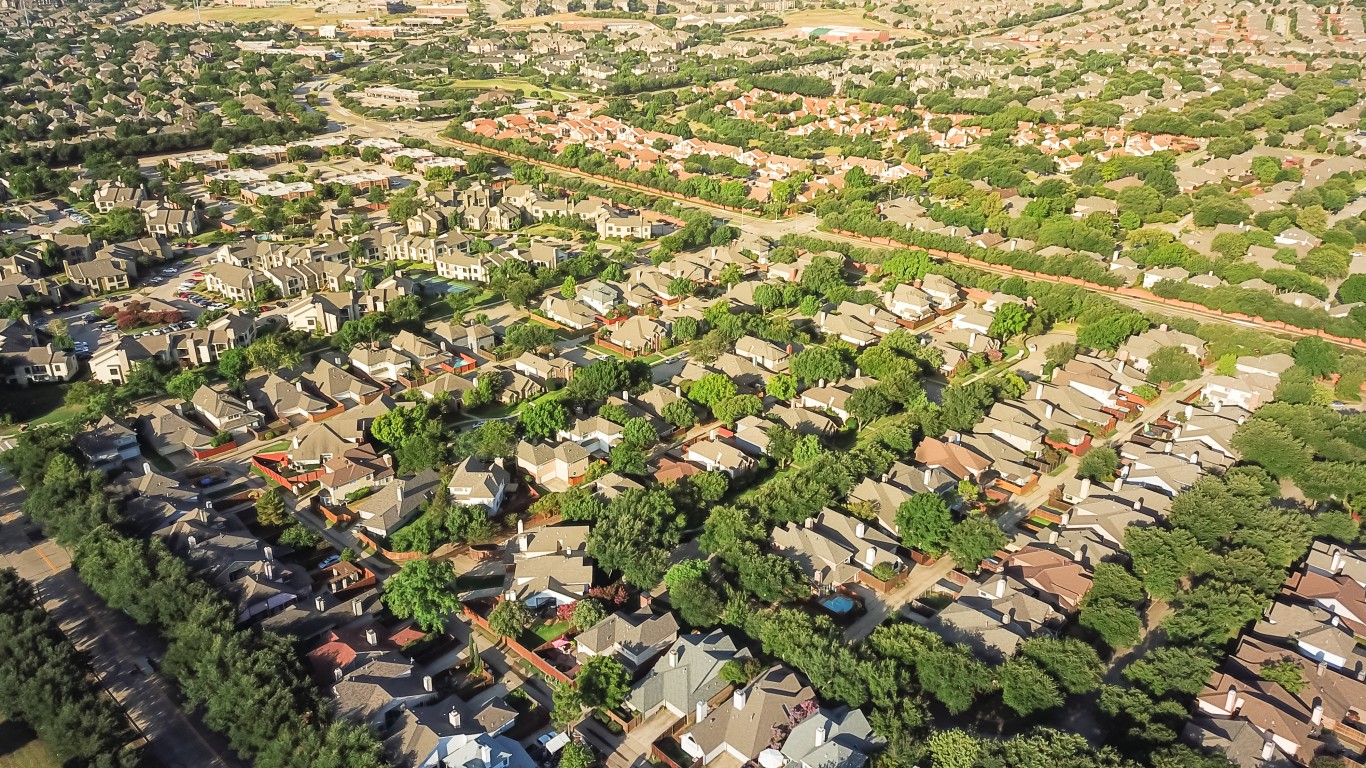
10. Dallas-Fort Worth-Arlington, TX
> Housing units moderately or severely inadequate: 4.4% (91,700 housing units)
> Housing units with piped water interruption: 3.4%
> Housing units with broken windows: 3.1%
> Housing units uncomfortably cold 24 hours or more: 3.2%
> Housing units with infestations: rats: 4.3% cockroaches: 18.7% mold: 1.7%

9. Kansas City, MO-KS
> Housing units moderately or severely inadequate: 4.6% (29,100 housing units)
> Housing units with piped water interruption: 2.4%
> Housing units with broken windows: 3.1%
> Housing units uncomfortably cold 24 hours or more: 8.9%
> Housing units with infestations: rats: 12.2% cockroaches: 6.4% mold: 3.3%
[in-text-ad-2]
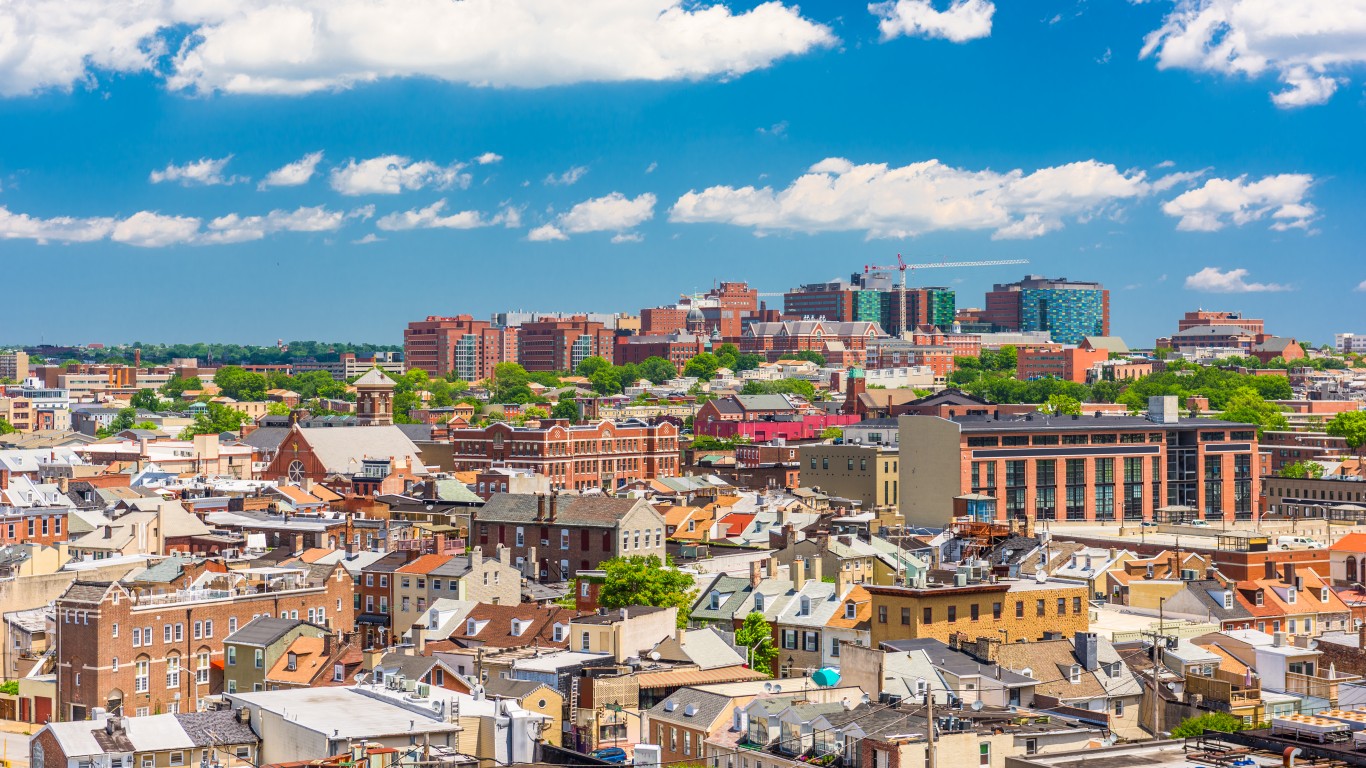
8. Baltimore-Columbia-Towson, MD
> Housing units moderately or severely inadequate: 4.7% (36,800 housing units)
> Housing units with piped water interruption: 3.1%
> Housing units with broken windows: 2.0%
> Housing units uncomfortably cold 24 hours or more: 5.3%
> Housing units with infestations: rats: 19.8% cockroaches: 6.2% mold: 3.3%
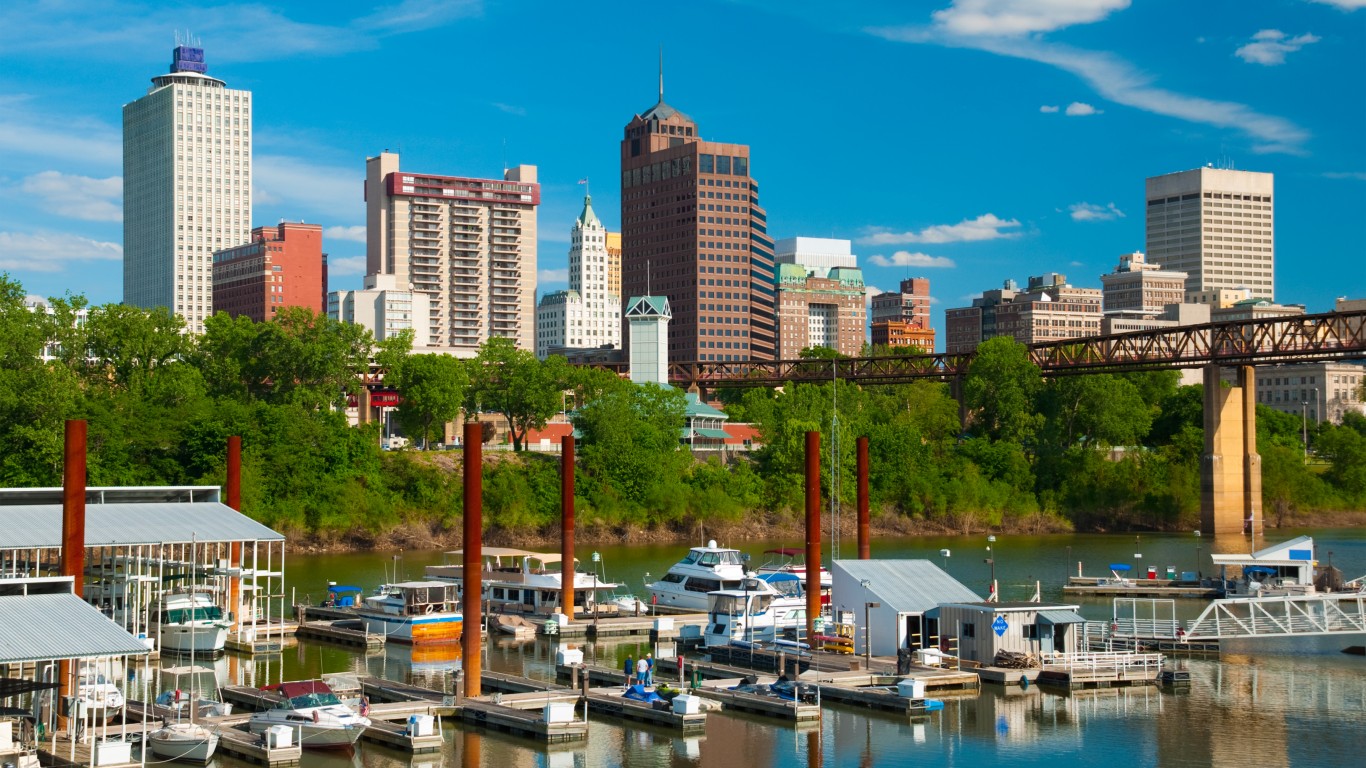
7. Memphis, TN-MS-AR
> Housing units moderately or severely inadequate: 4.8% (20,600 housing units)
> Housing units with piped water interruption: 1.9%
> Housing units with broken windows: 3.0%
> Housing units uncomfortably cold 24 hours or more: 4.5%
> Housing units with infestations: rats: 11.1% cockroaches: 18.6% mold: 3.4%
[in-text-ad]
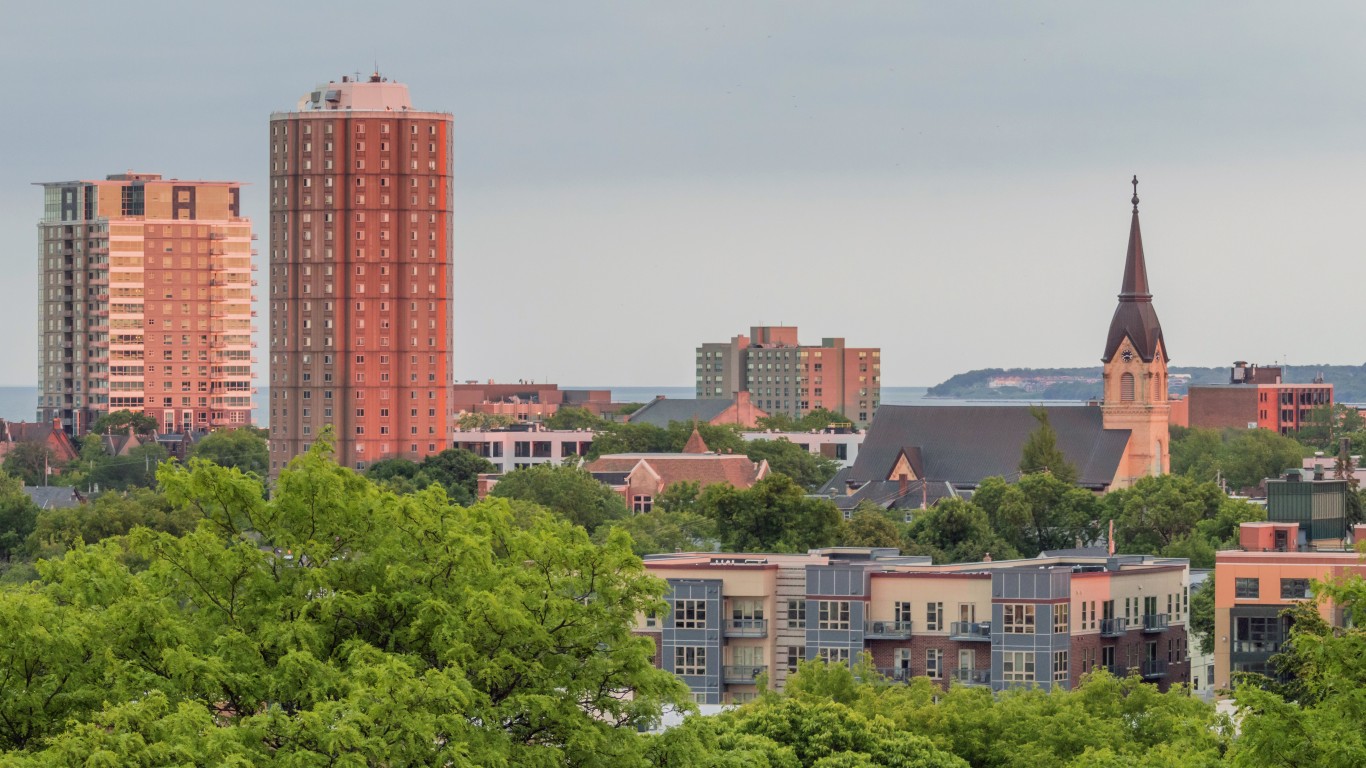
6. Milwaukee-Waukesha-West Allis, WI
> Housing units moderately or severely inadequate: 4.8% (22,100 housing units)
> Housing units with piped water interruption: 2.9%
> Housing units with broken windows: 2.2%
> Housing units uncomfortably cold 24 hours or more: 6.8%
> Housing units with infestations: rats: 11.2% cockroaches: 2.2% mold: 2.8%

5. Los Angeles-Long Beach-Anaheim, CA
> Housing units moderately or severely inadequate: 4.9% (153,300 housing units)
> Housing units with piped water interruption: 3.4%
> Housing units with broken windows: 1.4%
> Housing units uncomfortably cold 24 hours or more: 4.1%
> Housing units with infestations: rats: 5.9% cockroaches: 14.0% mold: 3.2%
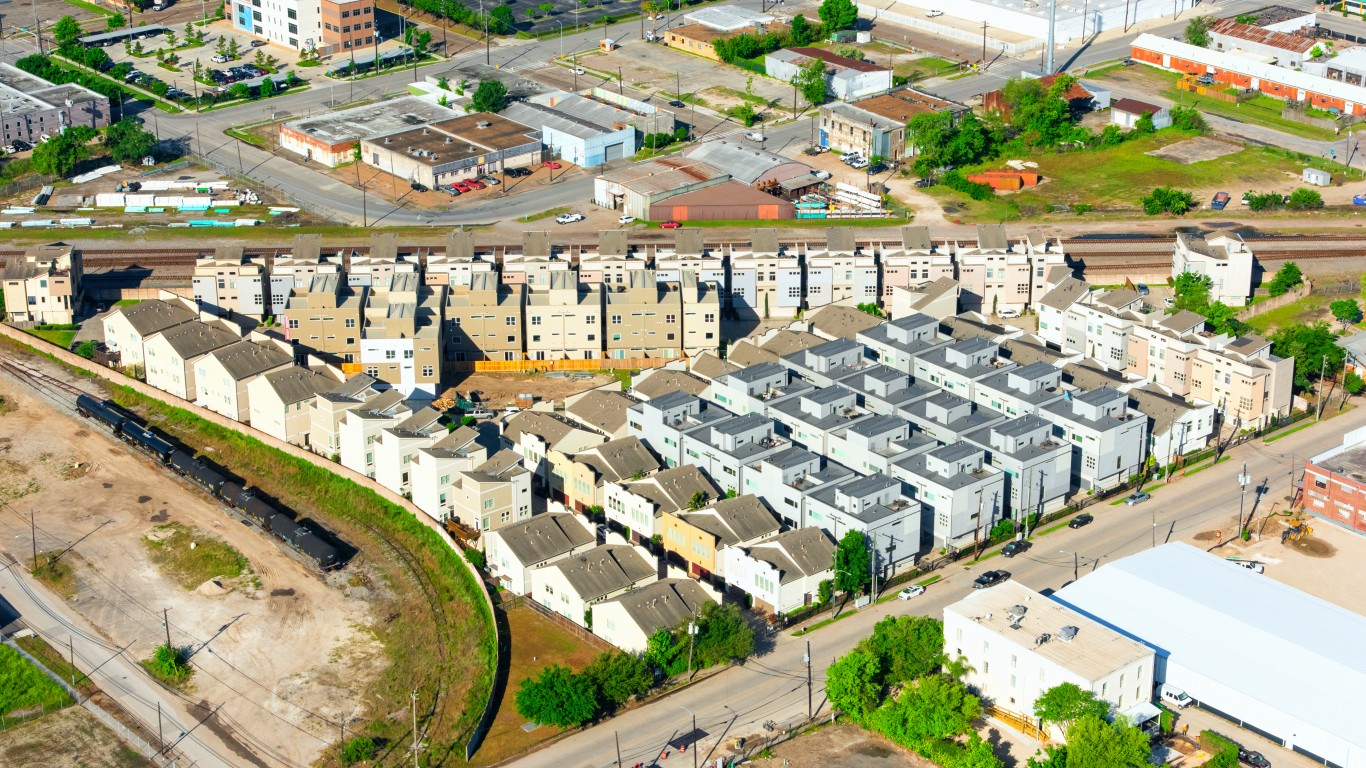
4. Houston-The Woodlands-Sugar Land, TX
> Housing units moderately or severely inadequate: 5.0% (83,300 housing units)
> Housing units with piped water interruption: 4.1%
> Housing units with broken windows: 3.2%
> Housing units uncomfortably cold 24 hours or more: 2.9%
> Housing units with infestations: rats: 6.8% cockroaches: 35.2% mold: 2.6%
[in-text-ad-2]
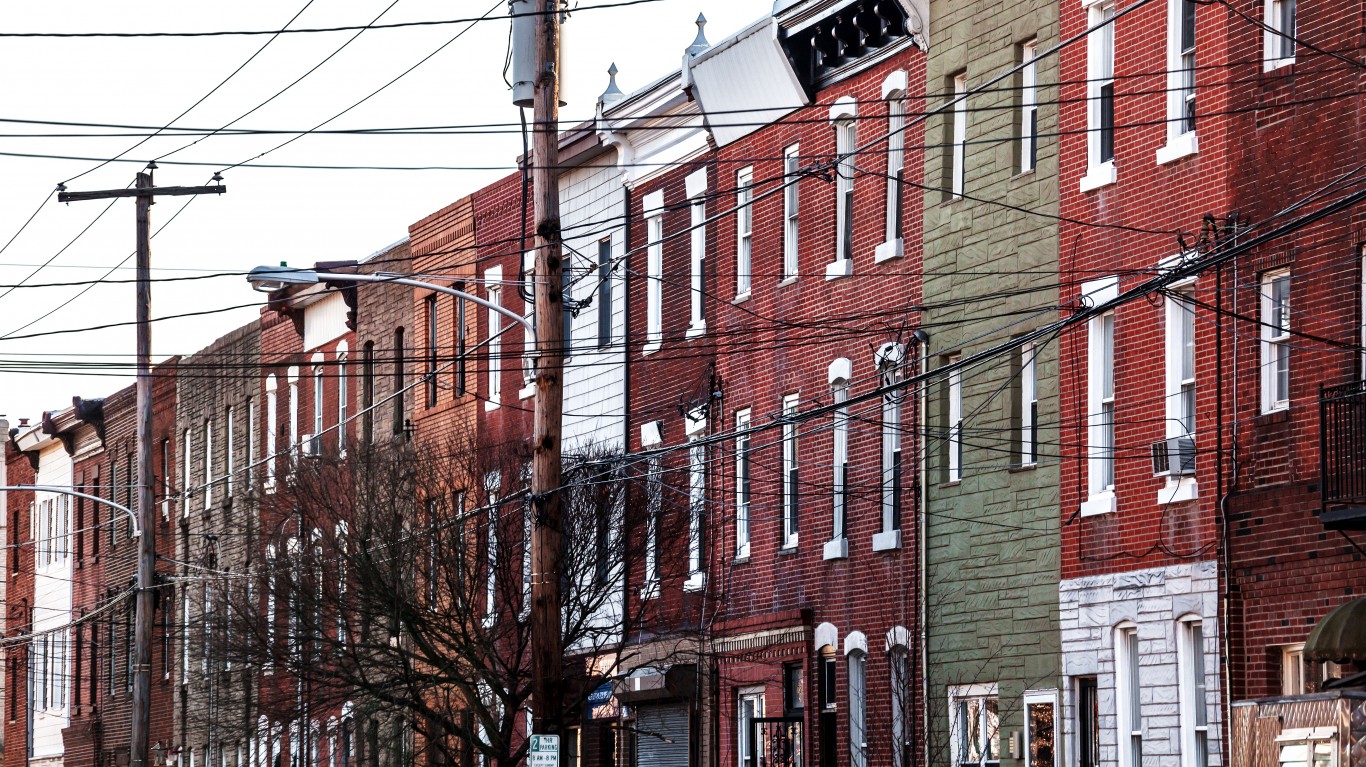
3. Philadelphia-Camden-Wilmington, PA-NJ-DE-MD
> Housing units moderately or severely inadequate: 5.2% (97,200 housing units)
> Housing units with piped water interruption: 2.3%
> Housing units with broken windows: 2.9%
> Housing units uncomfortably cold 24 hours or more: 7.7%
> Housing units with infestations: rats: 18.9% cockroaches: 6.1% mold: 2.4%

2. New York-Newark-Jersey City, NY-NJ-PA
> Housing units moderately or severely inadequate: 6.5% (278,700 housing units)
> Housing units with piped water interruption: 2.3%
> Housing units with broken windows: 1.2%
> Housing units uncomfortably cold 24 hours or more: 7.4%
> Housing units with infestations: rats: 11.2% cockroaches: 11.1% mold: 2.7%
[in-text-ad]
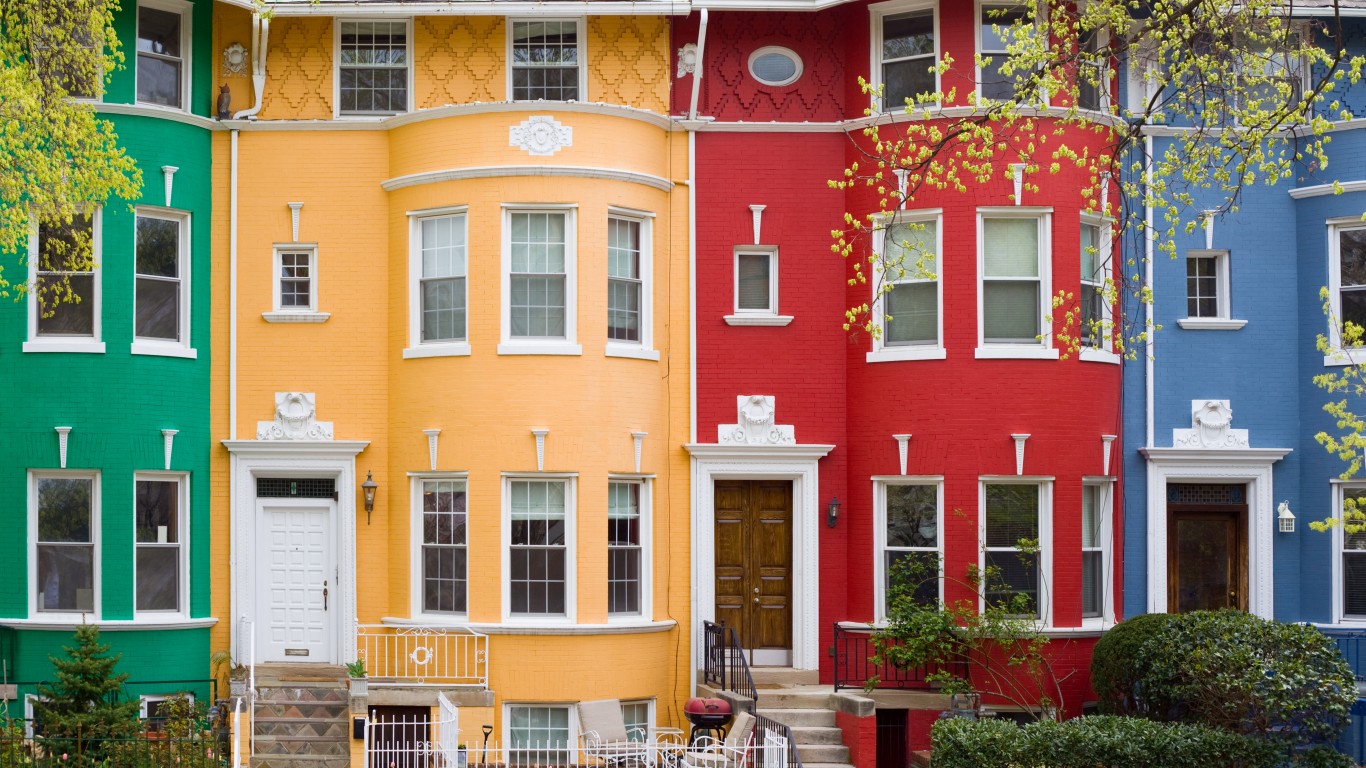
1. Washington-Arlington-Alexandria, DC-VA-MD-WV
> Housing units moderately or severely inadequate: 6.5% (111,100 housing units)
> Housing units with piped water interruption: 4.2%
> Housing units with broken windows: 1.2%
> Housing units uncomfortably cold 24 hours or more: 6.8%
> Housing units with infestations: rats: 15.1% cockroaches: 8.6% mold: 4.1%
Methodology:
To determine the cities with the most homes people shouldn’t live in, 24/7 Wall St. reviewed the 2019 American Housing Survey, which includes estimates on the percentage of moderately or severely inadequate housing units in 22 metropolitan areas. These metropolitan areas represent the majority of the largest cities in the U.S., all among the largest 50 by population. Only Miami, which is among the 15 U.S. metros, is not included.
The AHS defines moderately or severely inadequate housing units based on definitions from the Department of Housing and Urban Development.
To be classified as inadequate, a housing unit would need to meet at least one of the following conditions: 1. lacks hot or cold piped water, lacks a full bathroom, or shares a bathroom with non-household members. 2. Members of the housing units were uncomfortably cold last winter for 24 hours or more because the heating equipment broke down, and it broke down at least three times last winter for at least six hours each time. 3. The housing unit has no electricity. 4. All of the following electric problems occured: exposed wiring, a room with no working wall outlet, and three blown fuses or tripped circuit breakers in the last three months. 5. At least five of the following six maintenance problems: water leaked from the outside in the last 12 months, such as from the roof, basement, windows, or doors; water leaked from inside the structure in the last 12 months, such as pipes or plumbing fixtures; holes in the floors; holes or open cracks (wider than a dime) in the walls or ceilings; more than 8 by 11 inches of peeling paint or broken plaster; or signs of rats in the last 12 months.
Units were classified as moderately inadequate if at least one of the following conditions was met: 1. Three or four of the six maintenance problems listed in the severely inadequate definition. 2. On at least three occasions during the last three months, all the flush toilets were broken down at the same time for six hours or more. 3. Had unvented gas, oil, or kerosene heaters as the main heating equipment; 4. Lacked a kitchen sink, a working refrigerator, cooking equipment (stove, burners, or microwave oven), or were sharing the kitchen with non-household members.
Thank you for reading! Have some feedback for us?
Contact the 24/7 Wall St. editorial team.
 24/7 Wall St.
24/7 Wall St. 24/7 Wall St.
24/7 Wall St. 24/7 Wall St.
24/7 Wall St.